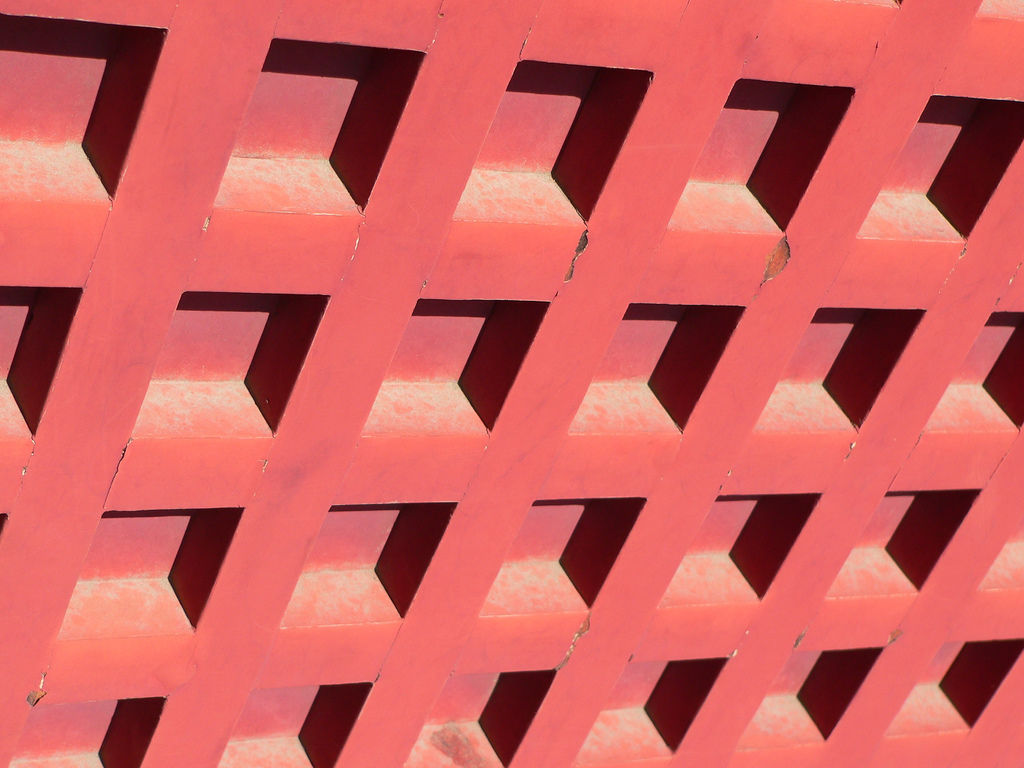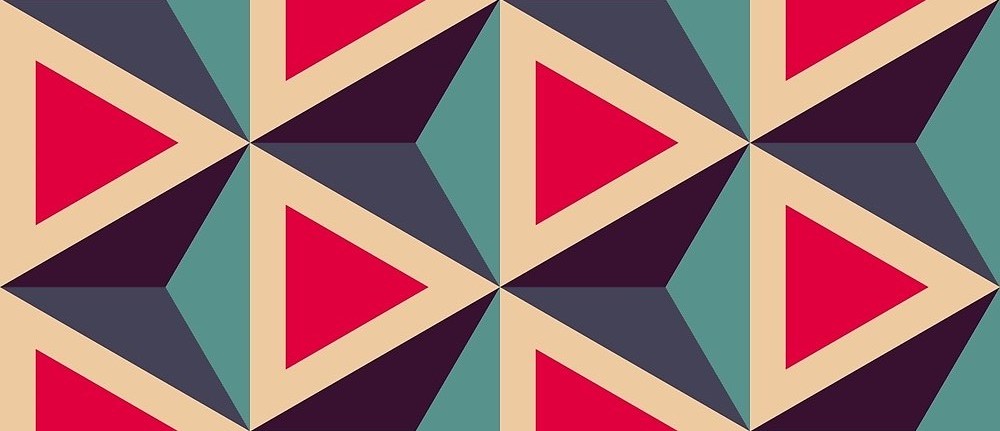The pattern in Graphic Design refers to a repetition of multiple graphic elements on your design working together to create an eye-catching and harmonious design. Anytime several objects share some characteristic repetition is created.

5 Basic Principles Of Graphic Design
The principle of repetition simply means the reusing of the same or similar elements throughout your design.

. Designing a company logo. Visual elements as a pattern is more to do with visual style or visual artwork in an overall piece of design work. The main principles of graphic design are balance contrast emphasis repetition and pattern proportion.
When the distance between repeated objects is identical we have frequency. You can create rhythm motion speed and dynamic action through translation symmetry. The company is trying to build a strong sense of recognition and the repetition of the pattern and illustration style across the different consumer touch points creates strong consistency and brand awareness.
And if you are a business owner or entrepreneur who wants to learn graphic design yourself then the course below is just the thing. It unifies your design elements and gives them a kind of a signature look. When the distance.
Emphasis balance and alignment contrast repetition proportion movement and white space. Learn the 7 basic principles of design that will make your next design stand out. A good designer will keep these principles and guidelines in their toolkit and will consciously use them to develop their ideas.
RHYTHM RHYTHM RHYTHM RHYTHM RHYTHM RHYTHM and MOVEMENT A regular repetition of elements to produce the look and feel of movement. P A T T E R N and Repetition Repetition of a design. Repetition means that every line classified as a headline should look like a headline and headlines formatted to look alike can be identified as having a similar function in the text.
The Gestalt principle of similarity is when we see elements that share characteristics as more related than those that dont. When more than one characteristic is shared the dominant one is used to describe the repetition. We can also see repetition of this type of symmetry in the eyespots along each feather as well as the white lines of light that shine through from behind the bird.
Repetition of an element of art ie shapes lines or colors to achieve decoration or ornamentation. It can occur in any direction or at any distance as long as the basic orientation is the same. The principle of design that refers to the visual equalization of the elements in a work of art.
Visual hierarchy is a design principle that refers to how elements are arranged in a design. Whatever work you produce be it for a magazine poster website or advertisement the principles of design should be considered. For example using the same color of your brand logo for the shapes.
Visual Hierarchy Infographic. Good design practice seeks to repeat. The area could be different in size color texture shape etc.
Repeat some aspect of the design throughout the entire piece. Contrast hierarchy alignment balance proximity repetition simplicity and function. Repeating colors fonts words or shapes can help tie your design and overall look togetherit also.
By repeating elements you create a pattern and strengthen your design. But to zoom in a little more take a look at this design from. The repetition creates translation symmetry.
Repetition is the reusing of the same or similar elements throughout the design. The principles of design are a set of guidelines adopted by modern designersfrom architects to graphic designers and everyone in between. This example of the visual identity design for Fort Point Beer by Manual shows how repetition is vitally important in branding.
When it comes to advertising design we think of the repetition of messaging in terms of catchphrases slogans or logos but it goes much deeper than that. Repetition helps create consistency and design flow. These principles include concepts derived from the art world.
Lines logos and other graphicvisual elements should be formatted. Using graphic design principles correctly can make or break a design. A two-dimensional medium made using graphite or other pigments contained in a stick-like drawing device.
Pattern principle is also referred to how design elements are designed in a project and set a standard on it to easily communicate your ideas. They are adapted to shape the design process to produce a result that encompasses both aesthetic appeal and usability. CAHNRS COMMUNICATIONS Basic Design Principles Repetition Design Principle Repeat visual elements of the design throughout the design.
Contrast helps to highlight and focus attention. The most common way to achieve consistency in these contexts is with a grid systemand what better person to learn from than the godfather of grids himself Josef Müller-Brockmann. Now this is not to be mistaken for repetition of visual elements as a pattern.
When you are looking at a pictorial by your favorite photographer you may be able to tell right away that its their work because of its. Use the same heading hierarchy and font throughout Use the same alignment throughout the project Use the same colors Use the same logos or images BRANDING. Emphasis is created by contrasting an element with other elements.
What is Visual Hierarchy. Rhythm is usually achieved through repetition of lines shapes colors and more. The four graphic design principles are contrast repetition alignment and proximity CRAP.
Grids Organize a Design. UNITY When all the elements and principles work together to create a pleasing image. Fonts should not change without a reason.
The butterfly is an example of reflection symmetry the fence. Repetition of certain design elements in a slide or among a deck of slides will bring a clear sense of unity consistency and cohesiveness. The repetitive element may be a bold font a thick rule line a certain bullet design element color format spatial relationships etc.
The key principles of design are. It can be anything that a. The same principle applies to body text.
Whether youre using contrasting colors or pairing bold typefaces with delicate fonts using this principle of design helps to create variety in your graphic that allows you to strategically emphasize parts of your design. Rhythm is a principle of design that suggests movement or action. Repetition The Principle of Repetition states.
The same graphic design principles apply to computer screens documents and presentation graphics. Graphic Design Videos Learn design principles best practices. Where contrast is about showing differences repetition is about subtly using elements to make sure the design is viewed as being part of a.
Consistency is a vital design principle especially if youre designing a product or brand. Repetition Unifies a Composition. Youve already seen a few examples of similarity in action see the uniform connectedness section and in MailChimps design in the invariance section.
Or form in design is called repetition. Contrast may be achieved using color shades of gray size visual weight and so forth. Lets have a closer look at the repetition principle of design.
Good advertisement design has repetition. Emphasis is the part of the design that catches the viewers attention. Natural forms develop translational symmetry through reproduction.
Logo Modernism by Jens Müller. It creates a visual tempo in artworks and provides a path for the viewer s eye.

The Design Corner Principles Of Design

Principle Of Repetition Pattern Visual Communication Design
Basic Principles Of Repetition In Graphic Design Design Guide
Basic Principles Of Repetition In Graphic Design Design Guide

Design Repetition Principles Of Alignment Symmetry In Graphics

5 Basic Principles Of Graphic Design

Repetition Pattern And Rhythm Interaction Design Foundation Ixdf
Basic Principles Of Repetition In Graphic Design Design Guide
0 comments
Post a Comment